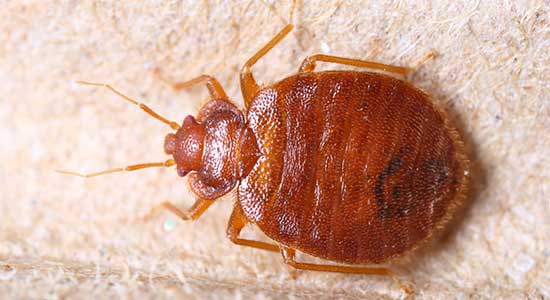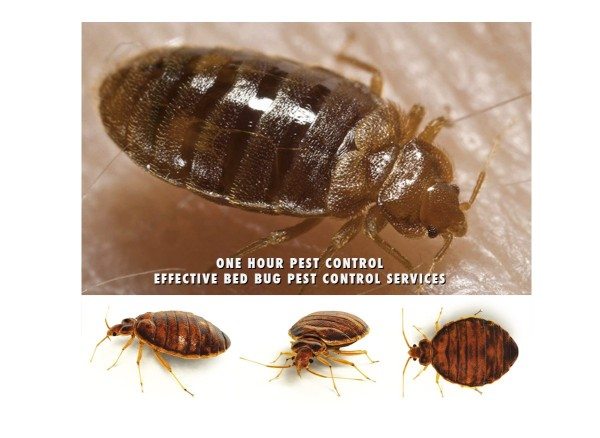Trusted Bed Bug Exterminator for Fast and Safe Elimination
Trusted Bed Bug Exterminator for Fast and Safe Elimination
Blog Article
Get Enlightened Concerning the Types of Pest Control Approaches and Their Benefits for House Owners
Comprehending the different bug control methods readily available to home owners is necessary for effective parasite monitoring. House owners that are knowledgeable can make calculated selections that not only address bug concerns but also enhance the overall quality of their living setting.
Chemical Parasite Control Techniques
Chemical bug control methods are a vital component of integrated pest monitoring strategies for property owners seeking efficient remedies to pest infestations. These methods include the application of chemical compounds designed to remove or prevent bugs that endanger personal residential or commercial property, health, and comfort. Usual chemicals used consist of insecticides, herbicides, rodenticides, and fungicides, each customized to target certain bugs.
The main advantage of chemical parasite control is its fast performance; numerous formulas provide immediate outcomes, reducing pest populaces significantly quickly. Furthermore, developments in chemical solutions have led to products that are a lot more eco friendly and have reduced poisoning degrees for non-target organisms when used correctly.

Organic Pest Control Methods
Natural insect control techniques have acquired prominence as property owners look for much safer and more lasting choices to conventional chemical methods. Organic parasite control methods utilize natural predators, parasites, or virus to handle parasite populaces efficiently. This approach is not just environmentally pleasant but likewise lessens the risk of damage to non-target species, including advantageous bugs and wildlife.
Among the most usual organic control methods entails introducing all-natural predators into the environment. As an example, ladybugs can be used to control aphid populaces, while nematodes target soil-dwelling insects like grubs. In addition, parasitoids-- organisms that survive on or within a host-- can be utilized to control certain pest varieties by laying eggs inside them, inevitably bring about their death.
An additional method is using biopesticides, which are originated from natural products such as minerals, bacteria, or plants (bed bug exterminator). These products can efficiently target bugs while posturing minimal risk to human beings and pets. In general, biological insect control methods offer homeowners with a reliable ways of pest monitoring that lines up with ecological principles, advertising a much healthier living setting while decreasing reliance on synthetic chemicals
Mechanical Parasite Control Methods
Mechanical insect control methods encompass a selection of methods that literally protect against or get rid of pests without the usage of chemicals. These methods are specifically useful for property owners looking for ecologically friendly options while guaranteeing the safety and security of their home.
One usual technique is making use of barriers, such as webs, catches, and screens, which prevent parasites from getting in homes or details areas. Installing home window annual pest control displays can successfully keep pests out, while making use of physical obstacles around yards can prevent bigger pests like deer or bunnies. Additionally, mechanical catches created for rodents can capture and remove these bugs without the need for hazardous compounds.
Another reliable method involves the usage of vacuums and brooms to remove bugs directly from surface areas. Regular cleansing and maintenance can considerably decrease bug populaces by removing food sources and concealing areas. Moreover, using tools like ultrasonic pest repellents can discourage numerous bugs through acoustic wave that are unpleasant to them however faint to humans.
Cultural Insect Control Practices
Cultural bug control practices concentrate on changing the environment and management techniques to create problems that are much less helpful to pest invasions. These techniques are fundamental in keeping a well balanced environment and decreasing the reliance on chemical interventions. By changing farming techniques, homeowners can successfully hinder pests while advertising plant wellness.
One usual approach consists of plant turning, which interrupts the life process of parasites by changing the kinds of plants expanded in a certain location (bed bug exterminator). This not just reduces pest populations but likewise boosts soil wellness. In addition, intercropping-- growing varied crops in proximity-- can confuse pests and minimize their capability to locate their preferred host plants
Water administration is one more critical element of social methods. Appropriate irrigation strategies can stop standing water, which acts as a breeding place for mosquitoes and other bugs. Furthermore, preserving cleanliness in and around the home, such as regularly removing debris and food waste, can significantly lower pest attraction.
Incorporating these social techniques right into a detailed parasite management strategy enables home owners to create an see it here environment that normally discourages pests, therefore enhancing the performance of various other control methods while advertising lasting horticulture and landscape design.

Integrated Pest Administration Approaches
Integrated Pest Administration (IPM) represents an alternative technique that incorporates different methods to successfully manage insect populaces while lessening ecological influence. This approach integrates organic, cultural, physical, and chemical methods to accomplish lasting insect control. By evaluating pest populations and their all-natural enemies, IPM highlights tracking and recognizing bugs prior to implementing control steps.
One of the core concepts of IPM is using thresholds, which develop the degree of insect task that calls for intervention. This guarantees that therapies are applied just when needed, lowering the reliance on chemical pesticides. Biological control techniques, such as introducing natural killers or bloodsuckers, job in conjunction with social practices like crop turning and environment basics control to interfere with pest life cycles.
Furthermore, IPM motivates the usage of least-toxic chemical options when intervention is essential, focusing on products that pose very little risk to non-target microorganisms and the environment. For house owners, taking on IPM comes close to not only enhances the effectiveness of pest administration but also advertises a healthier living setting, promoting biodiversity and minimizing chemical exposure. Eventually, IPM empowers house owners to make educated choices that balance parasite control with eco-friendly obligation.
Final Thought
In conclusion, recognizing the different pest control techniques empowers home owners to make informed decisions regarding pest administration. Each strategy-- chemical, biological, mechanical, cultural, and incorporated bug management-- provides distinctive advantages that accommodate various needs and preferences. By picking suitable techniques, property owners can efficiently take care of parasite populaces while minimizing health and wellness threats and ecological influences. This informed approach adds to a much healthier living environment, promoting total health for family members and animals alike.
Understanding the various insect control techniques offered to property owners is important for effective insect monitoring.Chemical parasite control techniques are an important element of incorporated bug management approaches for house owners looking for efficient options to pest invasions. Overall, organic pest control techniques supply homeowners with an efficient ways of bug management that lines up with eco-friendly concepts, advertising a much healthier living setting while reducing dependence on synthetic chemicals.
Cultural parasite control practices focus on customizing the setting and administration techniques to produce problems that are less conducive to pest invasions.In conclusion, comprehending the numerous parasite control techniques encourages property owners to make educated decisions pertaining to pest administration.
Report this page